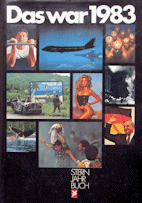
This text and these pictures were published
in the Stern Almanac of 1983 on the pages 46-47:
"The electronic stylus substitutes
the brush"
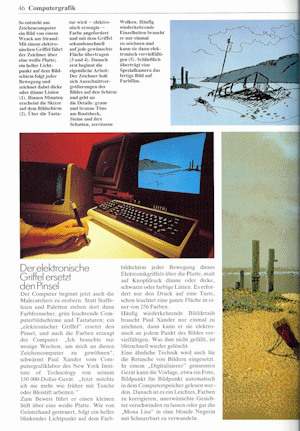
 1983 fur port.gif)
The computer begins now to conquer also the painter studios. Instead of easels und palettes are there now color televisions, green illuminated computer screens and keyboards; an “electronic stylus” substitutes the brush, and the colors are also created by the computer. “I needed only some weeks to adapt myself to the drawing computer”, enthuses Paul Xander of the computer graphic laboratory of New York Institute of Technology about his 150,000.00U$-machine. “Now I’ll never work again with ink or pencil like before.”
For demonstration he drives a small pen over a white board. How made by ghost hand, a little blinking point of light follows on the color screen each movement of this electronic pen over the board, paints at the push of a button fine or thick, black or colored lines. It needs only the push of one button and already glows a hole field in one of 256 colors.
Frequently repeated details of the image Paul Xander needs drawing only once, then he can multiply them at any place at the screen. What he doesn’t like can be deleted as quick as a flash again.
A similar technique is being used for retouch of pictures. In a machine called “digitizer” can be read the model, for example a photo, picture point by picture point to the computer memory automatically. After this it’s very easy to correct colors, to delete unwanted faces or to transform the “Mona Lisa” in a blond black woman with mustache.
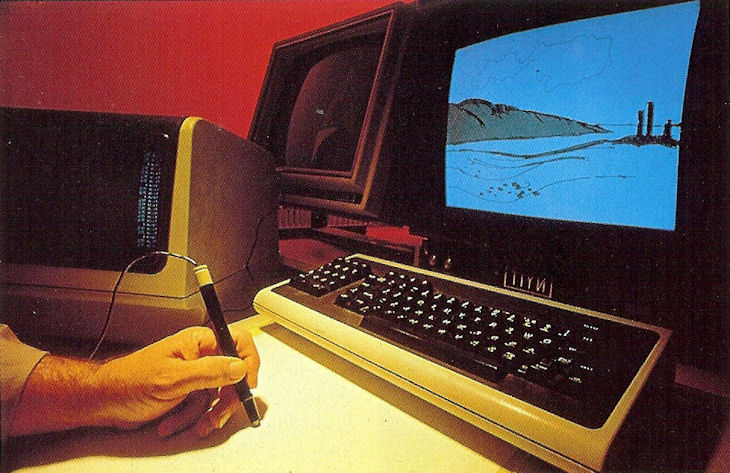
This is the way to create a picture in the drawing computer of a wreck at the beach: With an electronic pen drives the draftsman over a white board; a bright light point at the screen follows each movement and draws at the same time thick or thin lines.
In a few minutes appears the sketch at the screen. With the keyboard is required color – created electronically – and with the pen put to the desired area in seconds.
Only after this starts the real work: The draftsman takes blown up details of the image at the screen and starts with the details: gray and brown colors at the boat stern, stones and their shadows, burst clouds. Frequently repeated details he needs drawing only once and can them then multiply electronically. Finally a special camera transmits the finished picture to color film.
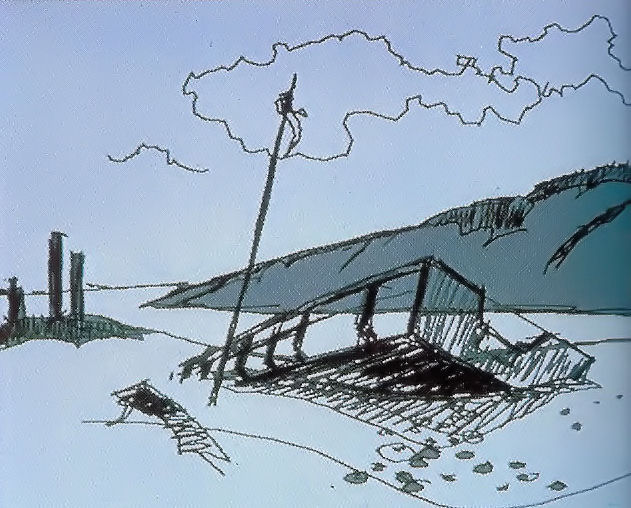
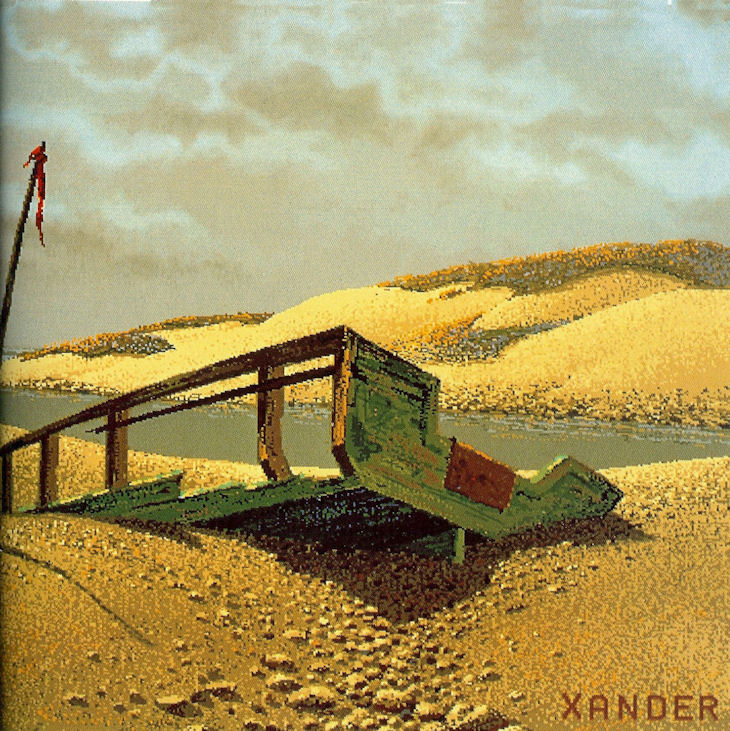
Scanned from: Gillhausen, Rolf (Hrsg.), Das war 1983, Stern Jahrbuch 1983, Hamburg 1984, p.46-47;
New York Institute of Technology, MC Nally/Wheeler
It is very astonishing and surprising for us today how development advanced in these last 30 years.
At that time such a computer cost fully 150,000.00U$ and wasn’t available at the shops for normal citizen.
The computer worked with only 256 colors.
Watching closely the pictures, you can see directly the lack of definition, the pixels are visible quickly.
And you needed living in New York and being the highly specialized selected computer expert. There was only one or some more.
What a difference today !
Today:
Today such a computer costs only 600U$ and is available for almost all at each supermarket. The graphic software costs possibly 400U$, so we reach maximum 1,000U$ altogether.
Today’s computers work all with 16 bit color (or more), that is 16 million color nuances.
And the pictures can have up to 30 or 60 million pixels or more, the resolution is absolutely overwhelming and prints in giant size are possible.
It is good every once in a while to make aware this development. We forget it too easily.
The consequence of all this is also a giant democratization in political-sociological sense: What was available in former times only for specialists and super-rich, is today for everybody.
On the one hand a tremendous positive development perceived by only few. This happened not only to computer graphic, but to all fields of technology and has to do with almost all areas of life what we normally don’t link with computers.
Each business, each product, even in agriculture is worked today with computers as a firm component. When we see today cows in the range land, so they have small electronic aids at their ears with all their important data stored.
On the other hand people get very confused by the permanent pelting innovations and ‘improvements’, they don’t get time to process them emotionally. There are a lot of potentialities for positive using. Let’s use them and hope that we don’t drop back in a dark age with disinformation and superstition because this new technology can’t afford this only by itself.
The computer is o tool comparable with a knife, very useful for the human and at the same time able to kill. Can we imagine living without knives ? Can we hold the computers responsible for the badness of our age ?(*)
ALL IMAGES AND SITE CONTENT © WOLFGANG HOCK